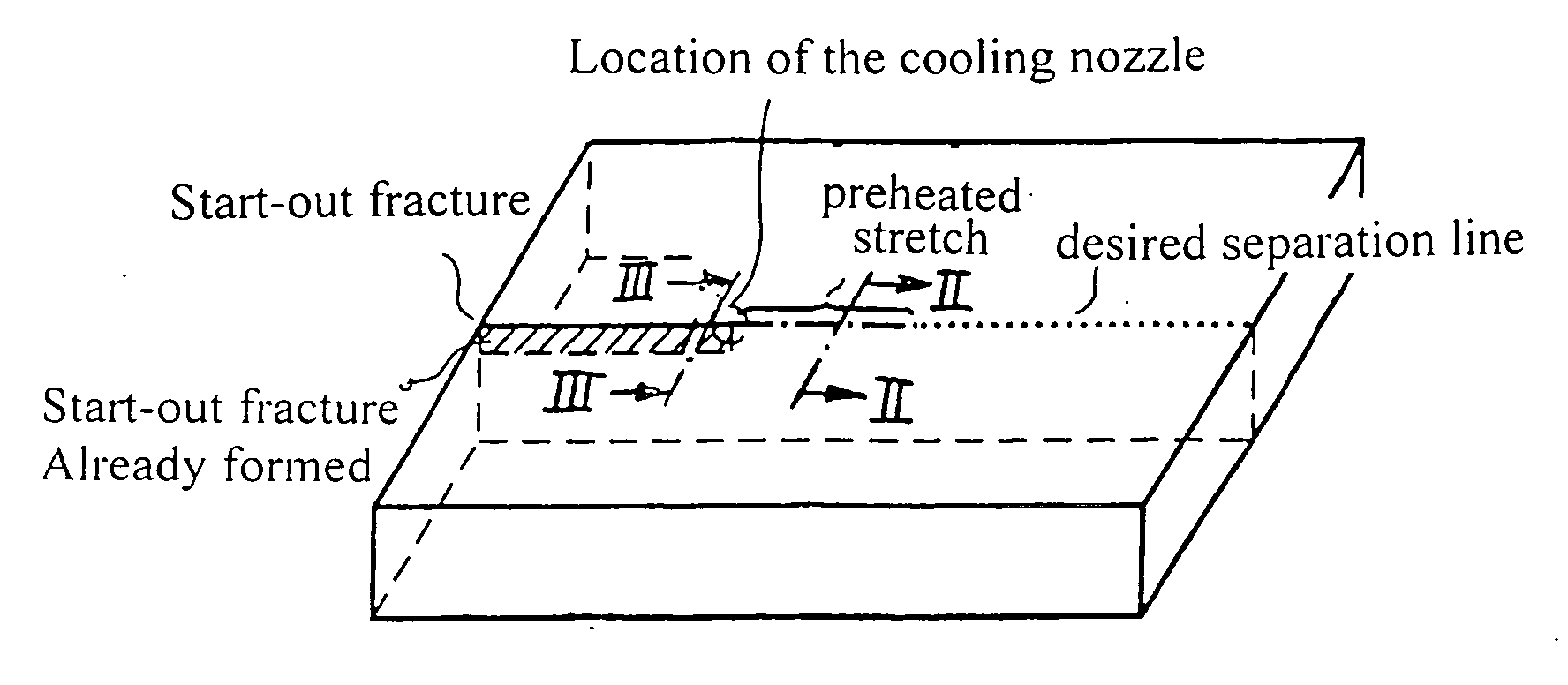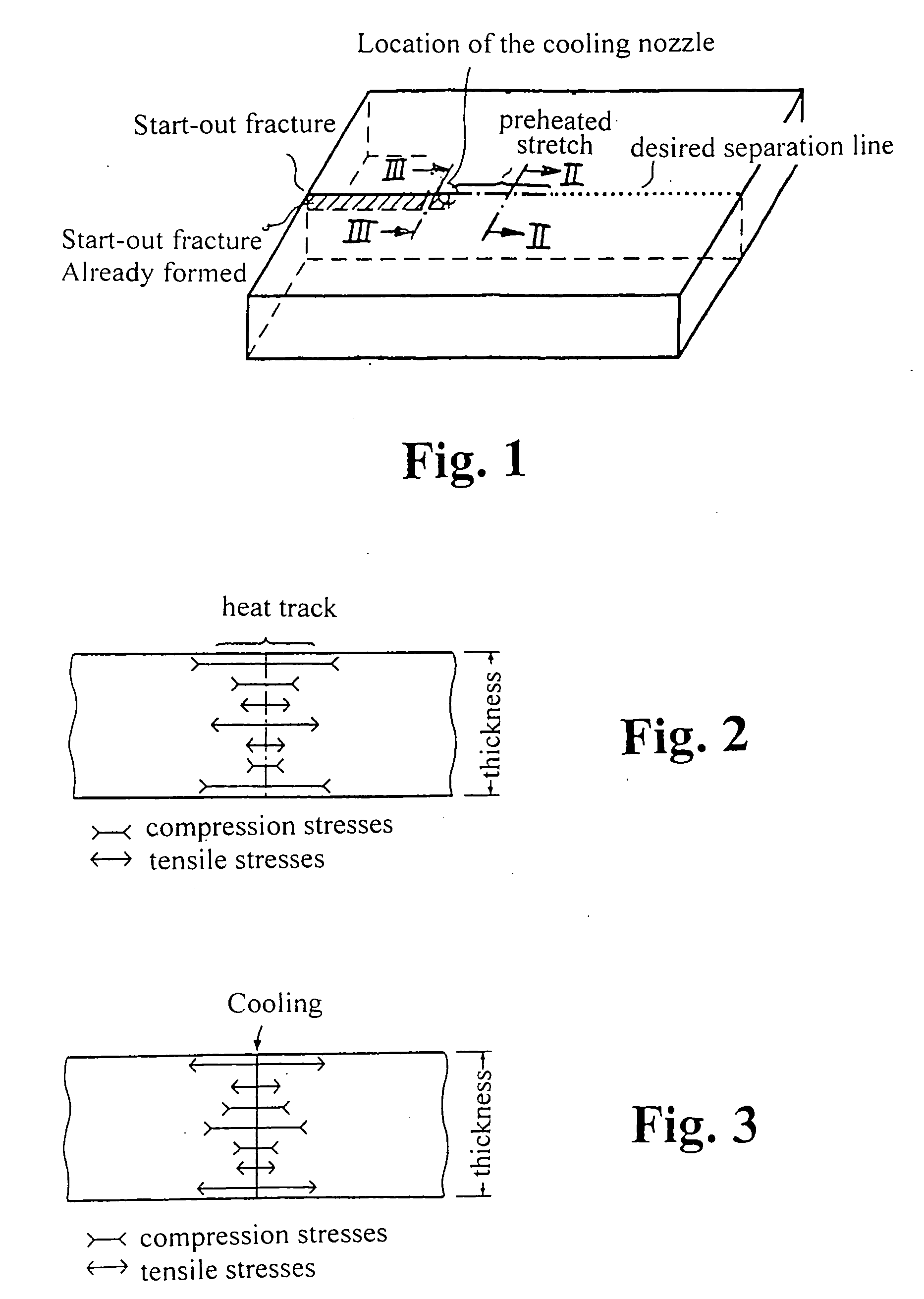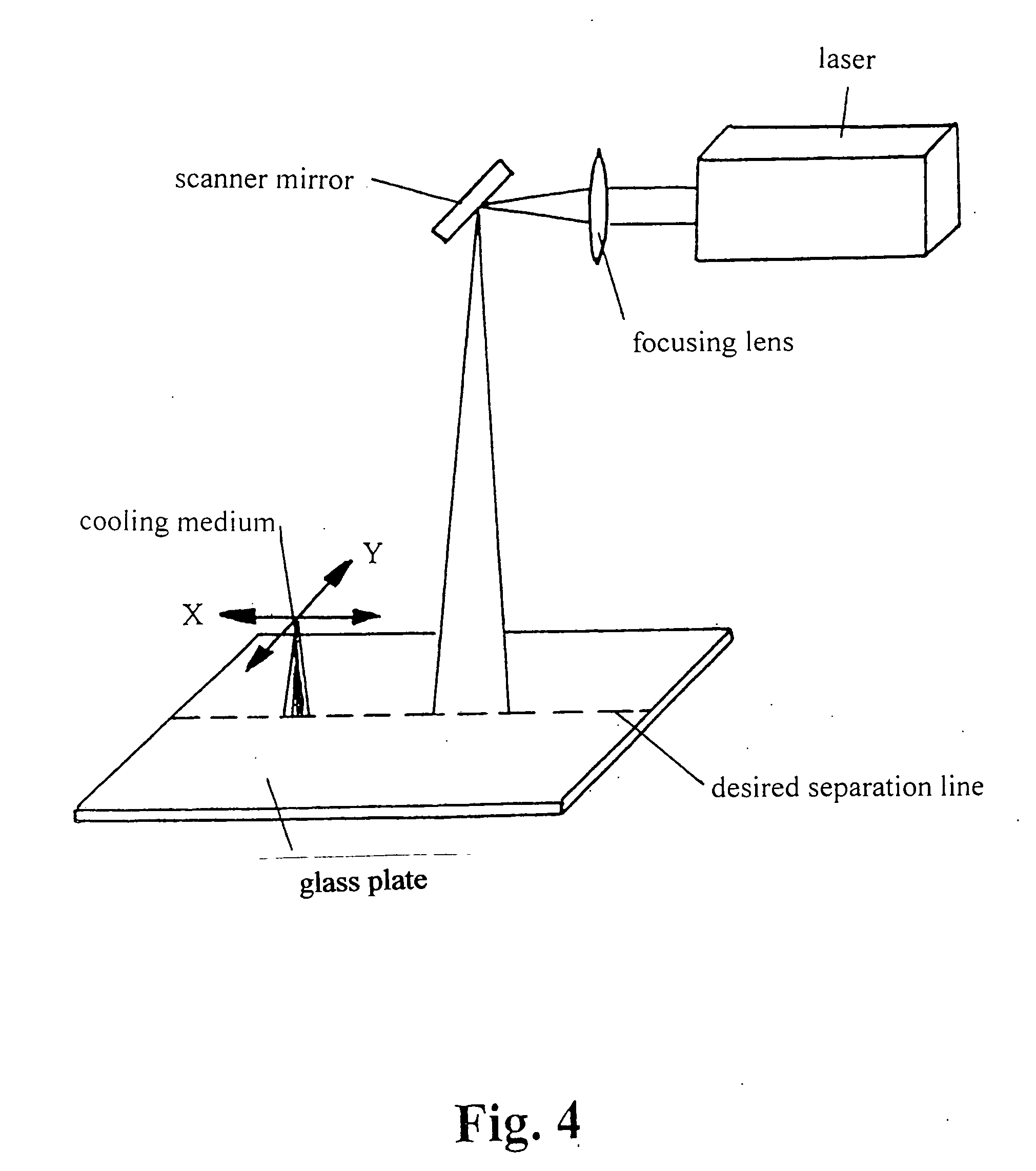Method for laser-induced thermal separation of plate glass
a technology of plate glass and thermal separation, which is applied in the field of low-damage separation of flat glass sheets, can solve the problems of inefficiency with regard to a higher cutting speed, limited cutting speed by increasing the applied laser energy, and long pauses
- Summary
- Abstract
- Description
- Claims
- Application Information
AI Technical Summary
Benefits of technology
Problems solved by technology
Method used
Image
Examples
Embodiment Construction
[0030]FIG. 1 shows schematically in a perspective representation a glass plate on which a score is formed along a desired separation line by the method according to the invention. The desired separation line is shown by a dotted line, the location of the start-out score (mechanical damage at the start-out score point) is indicated, the heating stretch, which has been repetitively scanned by the laser beam, is indicated by a dash-dotted line, the cooling nozzle disposed behind the heating stretch is indicated. The start-out crack already formed in the glass (in the area of the stretch already passed by the cooling nozzle) is shown hatched.
[0031] The FIGS. 2 and 3 show the stress conditions in the glass cross-section in the area of the desired separation line at the heating stretch (FIG. 2) in the area of cooling by the cooling nozzle (FIG. 3). The location and the extent of the compressive stresses and the tensile stresses is indicated over the thickness of the glass. Viewed over th...
PUM
| Property | Measurement | Unit |
|---|---|---|
| Time | aaaaa | aaaaa |
| Length | aaaaa | aaaaa |
| Length | aaaaa | aaaaa |
Abstract
Description
Claims
Application Information
 Login to View More
Login to View More - R&D
- Intellectual Property
- Life Sciences
- Materials
- Tech Scout
- Unparalleled Data Quality
- Higher Quality Content
- 60% Fewer Hallucinations
Browse by: Latest US Patents, China's latest patents, Technical Efficacy Thesaurus, Application Domain, Technology Topic, Popular Technical Reports.
© 2025 PatSnap. All rights reserved.Legal|Privacy policy|Modern Slavery Act Transparency Statement|Sitemap|About US| Contact US: help@patsnap.com



